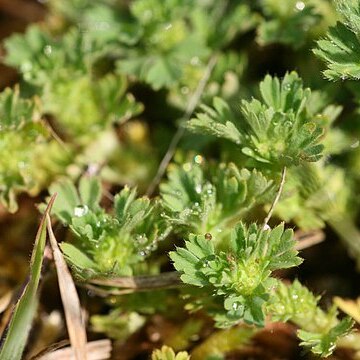An annual herb. It is a low slender plant. It is hairy. It grows to 5 cm high and spreads to 20 cm wide. The stem has several branches at the base. The leaves are grey-green and have 3 lobes. The lobes are oblong and there are teeth along the edge. The flowers are small and greenish and in clusters without stalks. These develop opposite the leaves.
Has been reported from N.S. It is coarser than A. microcarpa, to 30 cm, with blades to 1 cm, the lobes of the stipules triangular, about half as long as the undivided part, the fruiting hypanthium 2+ mm, and the sep somewhat spreading; 2n=48.

